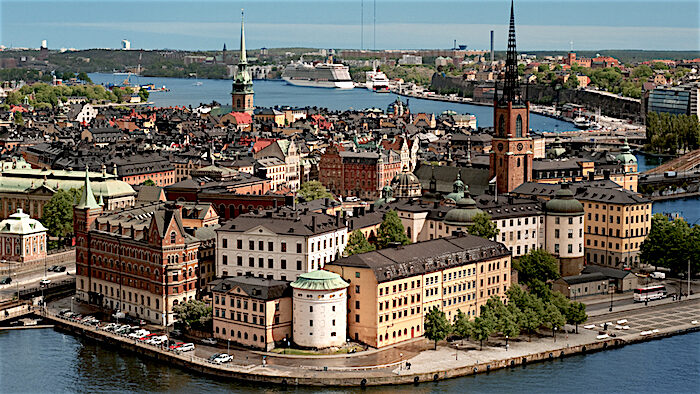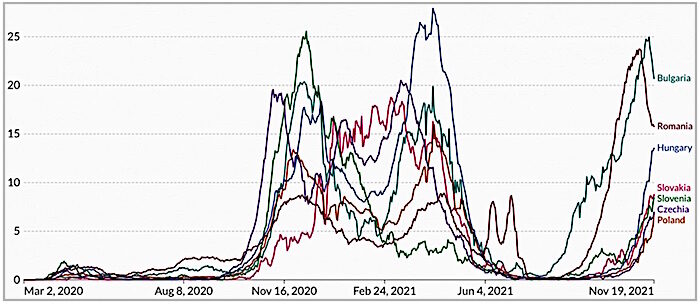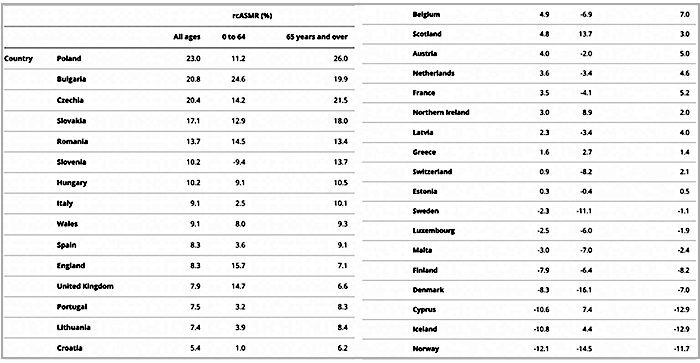As Johan Anderberg notes, Sweden's pandemic strategy was variously described as "deadly folly" (Guardian), "a disaster" (Time magazine) and "the world's cautionary tale" (New York Times).
Since the end of the first wave, however, Sweden has been gradually creeping down the list of countries by official Covid death rate. As of 16th October, it was ranked 52nd - well below the European average.
Yet this actually understates how well Sweden has done. As I and others have consistently argued, number of Covid deaths per million is not the best measure of the pandemic's impact on mortality. Far better is age-adjusted excess mortality.
Thanks to an ONS report published on Thursday, we now have age-adjusted excess mortality numbers for most of the countries in Europe, covering the entire period from January 2020 to June 2021.
As an aside, the report clearly states:
"The best way of comparing the mortality impact of the coronavirus (COVID-19) pandemic internationally is by looking at all-cause mortality compared with the five-year average."So what do the new numbers show? Sweden has had negative excess mortality. In other words, the level of mortality between January 2020 and June 2021 was lower than the five-year average. If this isn't a vindication of Anders Tegnell's approach, I don't know what is.
The table below (taken from the ONS report) shows age-adjusted excess mortality from 3rd January 2020 to 18th June 2021. As you can see, Sweden is 8th from bottom, with a value of -2.3%.
Interestingly, the bottom six are all small, geographically peripheral countries (three islands, plus Denmark, Norway and Finland). This suggests that geography and border controls were key, and that lockdowns - in the absence of effective border controls - didn't make much difference.
The top seven are all in Eastern Europe, which again suggests that some geographic factor is at work. What may account for high excess mortality in these countries is the fact that all of them missed the first wave, and hence had even bigger epidemics in the winter. Official Covid death rates are shown below:
If true, this would constitute strong evidence against the House of Commons' report, which concluded that Britain should have tried to suppress the first wave. As I've noted before, this approach always carried the risk of creating an even bigger epidemic in the winter.
In any event, Anders Tegnell can give himself a well-deserved pat on the back. His country kept civil liberties largely intact, and ended up with one of Europe's lowest death tolls. Well done, professor.






Reader Comments
— Ezekiel 28:24
So that just goes to show you how effed up things are that only a stubborn Swede could have the ability to think clearly.
Cause we all know, or at least I do, that natural immunity is best.
No doubt on it - never has been.
~~~~~~~~~~~~~~~~~~~~~~~~~~~~~~~~~~~~~~~~~~~~~~~~~
.....the year is coming to an end....fireworks on the horizon one be advised to surmise given the corner the elite find themselves in....oh well, time to poke out an eye - metaphorically of course, but if you think I'm playing around, then maybe time to poke out the other eye. Some of us are fedup and we will take this to the end!
~~~~~~~~~~~~~~~~~~~~~~~
BK
Geography can make a difference but not in the way the author is suggesting. Australia and NZ had much lower rates of ‘covid deaths’ in the first half of 2020 not because of Geography but because of climate. It was summer and flu is a winter phenomenon. I believe the primary reason is lack Of vitamin D.
Belief in the ‘germ’ theory limits thinking and prevents research into the true cause and effects of dis ease.
Some of us are fedup enough we will take this to the end.
BK
They're saying you can get pricked and still get it. Yes?
They are saying ‘even if you have recovered from covid (and therefore have natural immunity) get the jab after x months. (3 I think).
But from what i've heard through a lot of sources is natural immunity is superior and in my opinion preferred. And they're saying at this stage if you've had it you can't get it again, even those that had sars1 can't get sars2. And the prick is detrimental to immunity.
The reason i asked is so the rumours of the infection starting with vape and military games could be put to bed by finding those who suffered then and ask. Maybe thats to hard. Who knows.